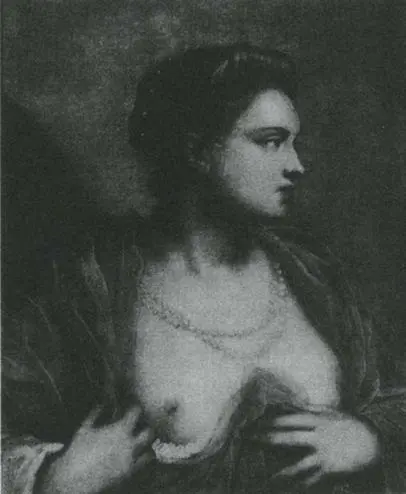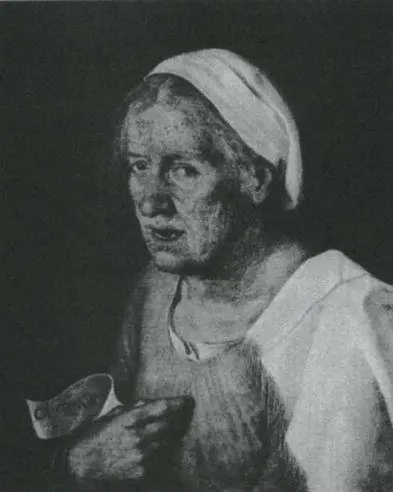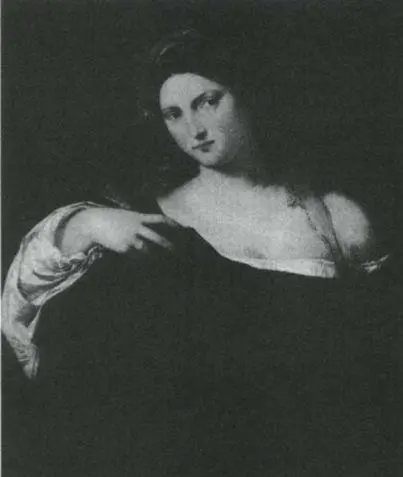Painting, then, offers palpable, instantaneous, unswerving, continuous, physical presence. It is the most immediately sensuous of the arts. Body to body. One of them being the spectator’s. This is not to say that the aim of every painting is sensuous; the aim of many paintings is ascetic. Messages deriving from the sensuous change from century to century, according to ideology. Equally, the role of gender changes. For example, paintings can present women as a passive sex object, as an active sexual partner, as somebody to be feared, as a goddess, as a loved human being. Yet, however the art of painting is used, its use begins with a deep sensuous charge which is then transmitted in one direction or another. Think of a painted skull, a painted lily, a carpet, a red curtain, a corpse — and in every case, whatever the conclusion may be, the beginning (if the painting is alive) is a sensuous shock.
He who says sensuous — where the human body and the human imagination are concerned — is also saying sexual. And it is here that the practice of painting begins to become more mysterious.
The visual plays an important part in the sexual life of many animals and insects. Colour, shape, and visual gesture alert and attract the opposite sex. For human beings the visual role is even more important, because the signals address not only reflexes but also the imagination. (The visual may play a more important role in the sexuality of men than women, but this is difficult to assess because of the extent of sexist traditions in modern image-making.)
The breast, the nipple, the pubis, the belly are natural optical foci of desire, and their natural pigmentation enhances their attractive power. If this is often not said simply enough — if it is left to the domain of spontaneous graffiti on public walls — such is the weight of Puritan moralizing. The truth is, we are all made like that. Other cultures in other times have underlined the magnetism and centrality of these parts with the use of cosmetics. Cosmetics which add more colour to the natural pigmentation of the body.
Given that painting is the appropriate art of the body, and given that the body, to perform its basic function of reproduction, uses visual signals and stimuli of sexual attraction, we begin to see why painting is never very far from the erogenous.
Consider Tintoretto’s Woman with Bare Breasts . This image of a woman baring her breast is equally a representation of the gift, the talent, of painting. At the simplest level, the painting (with all its art) is imitating nature (with all its cunning) in drawing attention to a nipple and its aureole. Two very different kinds of ‘pigmentation’ used for the same purpose.
Yet just as the nipple is only part of the body, so its disclosure is only part of the painting. The painting is also the woman’s distant expression, the far-from-distant gesture of her hands, her diaphanous clothes, her pearls, her coiffure, her hair undone on the nape of the neck, the flesh-coloured wall or curtain behind her, and, everywhere, the play between greens and pinks so beloved of the Venetians. With all these elements, the painted woman seduces us with the visible means of the living one. The two are accomplices in the same visual coquetry.

121 Tintoretto. Woman with Bare Breasts.
Tintoretto was so called because his father was a dyer of cloth. The son, though at one degree removed and hence within the realm of art, was, like every painter, a ‘colourer’ of bodies, of skin, of limbs.
Supposing that beside the Tintoretto, we now put Giorgione’s Old Woman , painted about half a century earlier. The two works together show that the intimate and unique relation existing between pigment and flesh does not necessarily mean sexual provocation. On the contrary, the theme of the Giorgione is the loss of the power to provoke.

122 Giorgione. Old Woman. c. 1969
I met the Bishop on the road
And much said he and I.
‘Those breasts are flat and fallen now,
Those veins must soon be dry;
Live in a heavenly mansion,
Not in some foul sty.’
‘Fair and foul are near of kin,
And fair needs foul,’ I cried.
Yet no description in words — not even Yeats’s lines — can register as this painting does the sadness of the flesh of the old woman whose right hand makes a similar but so different gesture. Why? Because the pigment has become that flesh? This is almost true but not quite. Rather, because the pigment has become the communication of that flesh, its lament.
Finally, let us add to the other two paintings Titian’s Vanity of the World , in which a woman has abandoned all her jewelry (except a wedding ring) and all adornment. The ‘fripperies’ which she has discarded as vanity are reflected in the dark mirror she holds up. Yet, even here, in this least suitable of contexts, her painted head and shoulders cry out with desirability. And the pigment is the cry.
Such is the ancient mysterious contract between pigment and flesh. This contract permits the great Madonnas and Children to offer profound sensuous security and delight, just as it confers upon the great Pietàs the full weight of their mourning — the terrible weight of the hopeless desire that the flesh should live again. Paint belongs to the body.

123 Titian. Vanity of the World. 1515
The stuff of colours possesses a sexual charge. When Manet paints the Déjeuner sur l’herbe (a picture which Picasso copied many times during his last period) the flagrant paleness of the paint does not just imitate but becomes the flagrant nakedness of the women on the grass.
What the painting shows is the body shown .
The intimate relation (the interface) between painting and physical desire, which one has to extricate from the churches and the museums, the academies and the law-courts, has little to do with the special mimetic texture of oil paints, as I discuss in my book Ways of Seeing . The relation begins with the act of painting or watercolour. It is not the illusionist tangibility of the painted bodies which counts, but their visual signals, which have such an astounding complicity with those of real bodies.
Perhaps now we can understand a little better what Picasso did during the last twenty years of his life, what he was driven to do, and what — as one might expect — nobody had quite done before.
He was becoming an old man, he was as proud as ever, he loved women as much as he ever had, and he faced the absurdity of his own relative impotence. One of the oldest jokes in the world became his pain and his obsession — as well as a challenge to his great pride.
At the same time, he was living in an uncommon isolation from the world: an isolation, as I have noted, which he had not altogether chosen himself, but which was the consequence of his monstrous fame. The solitude of this isolation gave him no relief from his obsession; on the contrary, it pushed him further and further away from any alternative interest or concern. He was condemned to a single-mindedness without escape, to a kind of mania, which took the form of a monologue. A monologue addressed to the practice of painting, and to the dead painters of the past whom he admired or loved or was jealous of. The monologue was about sex. Its mood changed from work to work but not its subject.
Читать дальше















